Antonio Martorell is a regular Havana visitor, a city where he admits to have found new confidences and drives for his life and artistic career. Up to now, no working commitment, and no immigration regulation either, has made him turn down the invitations by Casa de las Americas or by a dear friend on the island –professor and researcher Yolanda Wood or the late engraver Belkis Ayon have been two of the boldface names privileged by his friendship.
I met him during one of the trips he made to the capital in the late 1990s, when he was invited to give a workshop in one of the editions of the Huella Multiple (The Multiple Footprint) engraving event. Yolanda Wood introduced us and offered her house in Cojimar for the interview. She was so enthused over Martorell’s visit to Cuba and the prospects of her bearing witness to his unusual fine art happening at the Colon Cemetery, that she got a few words in edgeways during our conversation and suggested the track to follow on certain topics.
In that meeting we started a conversation on his artistic career and we’re picking up where we left off, taking advantage of his attendance to the Tenth Havana Biennial. Some questions and answers touch on his participation in the Huella Multiple project and broach a number of recurring topics related to his artworks. But down deep inside each and every one of them lies the intention of highlighting the artistic and intellectual conceptions of one of the greatest engravers of Latin America and the Caribbean, conceptions that have been enriched with each passing year.
Martorell, what stands behind your decision of carrying out an artistic happening at the Colon Cemetery?
I’ve always loved cemeteries. When I was a kid, I used to be taken to see the graves of my grandparents. The place was very cute. There were white graves, colorful flowers… Graveyards are one of the few quiet places in the tropics. Then as an adult, I used to visit them in an effort to weave stories together, recover memories or just unearth them because Puerto Rico is a country where history is denied. For instance, I visited the old Santa Magdalena cemetery in San Juan, trapped between the walls and the sea. Everything there is white, except the flags, and patriots and celebrated figures are mostly buried there. In that cemetery, the flags are the storytellers. The Lares flag, the flags of our struggle against the Spanish colonial rule, the latest flag, which is the same as the Cuban flag but with the colors inverted. You see that flag getting frayed as time rolls on, the colors getting blurred, and you know what patriots were buried before and those who were buried after without having to read the tombstones. It’s a cemetery that fascinates me. I’ve been bound to go there for multiple burials of people dear to me. For the Puerto Rican independents, this is a living cemetery of dying flags. As memory and as art, the cemetery has been quite present in my consciousness. When the AIDS crisis was in its initial swing back in 1989 and when a feeling of struggle and resistance was being built, I laid my hands on the cemetery as a tool to show the democratic side of death.
The AIDS issue was them pretty branded and it belonged to the four Hs: homosexuals, the hemophilic, the heroin users and the Haitians. And I said no, there’s only one death, our dead have the same category and deserve the same kind of homage.
I turned to death as a comment about life on the basis that you don’t have to wait for death, that we must all win recognition in our lifetimes.
I created an atmosphere which is both related and quite different to what has been done at the Colon Cemetery. That was called a sementery, with an “s”, like in semen. On that occasion, I turned the order around; the floor was carpeted with a huge canvas as if it were a starry sky at day and night. There was a black-lace fence with the names of the dead written in frost; the impression was festive, nearly of a motley nightclub. There was also a wood-carved door –that I still have it home– also made of names. Once you walked past that door, you had to take off your shoes because otherwise you were stepping on heaven.
None of the tombstones were totally fixed on the floor, giving the sensation that they were taking flight, just like kites of different sizes, some of them huge and all of them buffed. The walls were also covered with buffed tombstones, in black and white pus one color; there flower festoons hanging up and down from a very tall ceiling. Another place had been damaged by a hurricane, featuring felled trees, and with those trees I made a circle and in the middle of that circle I put white Japanese paper. I created sort of three ghosts or souls. I put flower wreaths with keepsake ribbons, also written in frost. In this project I counted on the help of students and professors from three colleges. We buffed graves of three cemeteries from different towns on the island: San Juan, Cayey and Aibonito. It was, like in this cemetery in Havana, a collective workshop of individual creation because many times we understand the collective inhibits the individual, but that’s not the case. It all depends on the drive behind the collective happening. The way I work can never inhibit the individual. I orient the tasks from a very general concept, open to the eventful, to the accident that uses the arts as a life insurance, that fosters discoveries and the development of individual initiatives.
The death motif is commonplace in my work and in many artworks around the Caribbean and in especially in Puerto Rico. I have a previous series, I think it dates back to 1972 and it’s called The Wake. In it I refer to those things that people say at the wakes.
I’ve been told you usually make obituary speeches in wakes and burials. Is that true?
Oh, yes, wedding farewells and obituary toasts. The terms are perfectly interchangeable. I started in those observances by sheer chance, a very serious one. When my mother passed away I had to put off the wake, something that I’ll never ever do again in my life. You don’t put off happiness, yet I’d like to put off wakes forever. I remember I heard the news in the middle of the night and all of a sudden I grew aware of how grave this situation was, and I said to myself, “I must sleep on because I have to wake up tomorrow and buy a plane ticket first thing in the morning to fly to Puerto Rico, to attend my mother’s burial.” I fell asleep immediately, I got up at the right time, put on my tracksuit and went out to jog in the park. I did my laps and when I came back home I felt the need to write something. I wrote a few notes that eventually panned out to be a token of bereavement that I hadn’t been able to express in any other way up to that very moment, not even in tears. I called the travel agency, I made my arrangement, I consulted my aides, I hopped on a plane and I rewrote the notes in a clean sheet of paper during the flight. As I usually do, I corrected a few dumb things, spelling mistakes, repetitions, because I always write as if I were a medium. My writing comes to my mind, I don’t know whether it comes from the otherworldliness or from a down-to-earth location, but it does come from somewhere else other than from myself. All I do is take notes.
I have to show you those note sometime, which is really definite. People were both crying and laughing when they listened to it at the cemetery. I choked on my remarks, but I read it out. Though I must confess the postponement of my grief caused me to go back on a shrink couch because I started suffering from depression. I remember I used to swim into the high seas every morning and when I was close to the limit buoys I used to cry and scream for about ten minutes. If you want to cry and want nobody to screw up your cry, you ought to swim out into the ocean. That’s the best place. Besides, you know, the salt of the sea and the salt of your tears make no difference.
That’s how I cut my teeth in the obituary art. From that moment onward, I got the knack of the business, I made wedding toasts and published an article, came up with a text about the ways of making wake toasts and wedding farewells. People used to call me to either be the speaker at the ceremony or to teach them how to do it. Still today, every time I attend a wake or a burial I know I have to make a speech. If I don’t write one beforehand, then I make one up on the spot.
Have you ever had the chance of making these happenings or “performances” in Mexico, a country where death is a major reason for celebration?
Of course. In Mexico I built altars for the dead. The latest was for Toñá la negra, my illustrious namesake, singing the boleros of Agustin Lara. Indeed, I staged some four dead parties, dead altars and at the end of the day it was such a major development that even the Tlalpan municipality helped me with the coffee. I even brought in mariachis to one of those parties. Tania Libertad sang in one of the dead altars I built in Mexico, and television covered those events.
Buffing seems to be a resource of choice, nearly an obsession in your artistic expression…
And who doesn’t like it? That’s the principle of all lives… If there’s no buffing there’s nothing. What are we talking about?
But in your case, we’re talking about buffing lifelessness…
It makes no difference whether you’re buffing lifeless matter. That’s a drive behind life anyway, a drive of noble intentions and expectations. A female friend of mine once wrote that I’m a non-conceptual artist, but a consensual artist. I love being a consensual artist.
Tombstones are basically engraved or built in relief with either carved or embossed letters, like at the Colon Cemetery, contrary to the cemetery spelled with an initial “s” in which I hinged on the concept of life defense and in which the evidence of death was only a vehicle. I went to the Colon Cemetery one day when I was going to watch a movie at the Cinemateca de Cuba theater and there was a power outage. Somebody told me the Colon Cemetery was nearby and I knew it was very beautiful. I’d been told that among the four most beautiful cemeteries in the West, Colon ranked fourth on that list. It sounded odd to me that Cubans could accept being fourth on any list, a lack of modesty that has nothing to do with the country…
I counted on the support of the cemetery’s officials, and the investigation revealed that most of the Caribbean dead were buried there in unmarked tombs. I set out then to work on that restless condition, and in the base or baseboard I put scattered letters, like an ant hive, letters that want to become names.
It was like reading the palm of the hands, some kind of historic blinds, you know, and that unraveled the memory of a Braille written by time. That’s why I believe in our decision to make these happenings in an event like La Huella Multiple, because, what can be more multiple than those millions of dead people buried there? What can be more multiple than the labor of those marble workers and forgers who created the matrixes we were going to stamp, to print time and again, nearly a couple of centuries later?
Do you share the concept or notion of the multiple footprint as an art assumption?
I’ve been engaged in that notion for quite some time now, it’s a part of my stock of ideas, just like my ideas of today, the upshot of a dialogue with the circumstances, with the materials. I’ve been collecting footprints for quite some time now. For instance, I’ve made engravings in lace, in mats, in straws, of everything. That is, I feel free to engrave nature, the leaves, the barks of the trees, the walls… I can say I’m no stranger to any surface and that all surfaces are invitations to the touch. Moreover, either out of smoothness or brightness, or either out of harshness or ruggedness, each and every one of them has a charm of its own, and that’s what has made me to work on stained glasses and combine buffed surfaced with see-through smoothness. I’ve been working with knitters for some time, that is, I make the designs that they weave. I’ve engraved the lace before, and now I order them to weave the lace. That is, I’ve become a lace designer rather than an engraver.
Now that we’re talking about trades or professions, do you have an academic formation?
My collegiate education was as a Jesuit in a very particular fashion. My sole college formation is diplomatic, I’m a career diplomat. All the rest is not self-taught, because that word also pisses me off. I don’t teach myself, I choose my teachers and suck them to the bones, I suck them dry… The education I received was a Jesuit education during my training to be a diplomat for the United States. Of course, they were so good at teaching me that they laid bare for me all the resorts of power and that’s how I discovered the absolute colony, regardless of its best bib and tucker, that Puerto Rico is actually like, as well as all the balances of power and the manipulations of the international relations. Halfway down the road of my university education, I realized I could never become a diplomat because I was so afraid of being what I always wanted to be unknowingly: an artist, and when I say an artist I mean it in the broadest sense of the term, an artist like someone who seeks to express things that he not necessarily knows about, like the link between origin and fate. That Jesuit education formed me and deformed me in the syllogism, beefed up my rational passion. Since I abandoned that world to date, I’ve been sort of trying to go back to square one, de-educate myself and learn to accept the irrational and the enlightenment of other reasons. Of course, I think it’s some kind of uphill battle and I always hang on to a rational structure. I’ve got enslaving coordinates that the furthest I’ve taken them is to put them at the beck and call of wrongness. All these collective works and those liberties I take are, in the same breath, reined in by a Cartesian rigor and –as this friend of mine would put it– a Jesuit wickedness, a profound perversion.
Have you ever been branded as an anti-establishment rebel from a political, ideological standpoint, given that radical denunciation and life redefinition of yours?
I’m a political person by necessity because I’m a political object and subject. It’s not that I decide to be political, it’s that I have no other choice. I don’t like politics. If I liked it I were a politician. Nevertheless, I’ve endured and enjoyed both persecutions and finger-pointing. I used to have a house I called “my countryside house” and the FBI raided it with machineguns, two choppers and four armored vehicles with two dozen armed men aboard. Fortunately I wasn’t there; otherwise you wouldn’t be hearing about it from me, not because they would have killed me, but because I would have been scared to death, I would have had a heart attack. And it didn’t have anything to do with me, but rather on the fact that the house had been empty for a long time and they were suspicious there was something going on down there. That happened the same day they raided two dozen more houses, Puerto Rican households, in an operation designed to terrify people. It was on that day when they detained Filiberto Ojeda Rios, our leader, and put him on trial. I covered that trial as a reporter. “The Court Notebooks” were my first works in the graphic-literary chronicle, working for a newspaper that had promised not to give more than just one page to the coverage of the Ojeda trial. I remember that with that nerve I inherited from my mother’s family –a bunch of ass-kickers by nature named the Cardonas– I went to the newspaper editor’s office and I told him: “I’ve got you a proposal you can’t refuse. I promise you to raise the sales of your newspaper as soon as word is out that Antonio Martorell is going to cover the Filiberto Ojeda Rios trial,” and he said yes. Everybody thought this trial is just going to take a couple of days, yet it stretched out for a whole month and I got a three-page coverage once a week. You know you can’t take pictures inside a courthouse and just draw sketches, however, I heard things so sensational that I started to write, and my report notes soon became graphic-literary chronicles I’m now working on with “The Street Notebooks” to be followed by “The Capitol Notebooks,” “The Hospital Notebooks,” “The Airport Notebooks,” “The Madhouse Notebooks” and so on, as long as I’m paid for that.
Based on the open-mindedness you express yourself artistically, can we consider your work as interdisciplinary?
Even though boundaries do exist, I try to knock them down. The difference between the individual and the collective, I think, is largely arbitrary. All my work –and when I say all my work I mean all of my life– is an attempt to wipe out categories, rub out limits, confirm a fluency, a possibility of change and modification. At the Huella Multiple event I’ve witnessed a strong collective awareness of both the Cuban and the universal character within the individual framework. One of the things that astounds me and eggs me on the most about the Cuban art is its extraordinary ability to forge its own with somebody else’s stuff, the international with the national, the avant-garde with the traditional. That’s precisely one of the reasons why I keep coming back to Cuba time and again and I relate vitally with the artists. What brings me here is not the difference. I come from the other side, from the tradition of the tradition, yet I’ve got an avant-garde vocation; not out of modality or driven by the futile desire for originality or for being experimental, but rather for the sake of feeling and expressing the experience. That is, for being both the subject and the object of the experience. It’s not the experiment for the sake of it, in the lab and no less the modality, nor the obsession of being on the front line, but the satisfaction of being where I am, of recognizing my stance and make it move on.
I’ve always advocated for the multiplicity of resources. Even in the 1970s I called for a Caribbean esthetics. But not a limiting Caribbean esthetics, not a kind of Caribbean esthetics that was being wielded as a dogma, but rather as a tool, based on the certainty of the knowledge and the fact of having been victimized by a society that used to deny its own. From the very beginning, I used to make a clarification that it was in no way an action plan or a unique path to follow, but rather an attempt to rescue elements that had been denied up to that moment, that could join our discourse in the same manner we’ve incorporated the discourses of the German graphic or the Japanese art. And that’s how I’ve always put it in practice, like in the exhibit in which I slipped in Letters to Young Poet, by Rainer Maria Rilke. Many times that used to throw the audience and the critics off the scent because they used to say, what’s this Puerto Rican doing with Rilke? Well, damn it, Rilke belongs to me as much as Thomas Mann, as much as Cervantes, as much as Dostoyevsky; I’m an heir to that other part of universal culture because ours is universal as well; the Caribbean is universal. It’s like rubbing out those pathways, completely understanding the whole, being able to swim freely in all those waters as if they were mine. But we’re in a shambles and the colonial inheritance has been so mighty in my country that for years –it’s still happening today– a stupid rift between the abstract and the figurative followers, between the universal advocates and the nationalists prevailed. What the heck is that? That’s precisely what I stand up against. Why do they have to corral and take away the knowledge and the usufruct of beauty from artists and spectators? No, that much is all mine, I want it all, and I want it all the time.
In nearly all the collective projects you have led we clearly notice a complementary dichotomy between learning vocation and pedagogy. Which of the two is more gratifying for you?
Any work of mine takes some learning to do. I always do what I can’t do. If I do something I can do that’s quite boring to me and I guess it might end up being boring to the audience as well. I hate to repeat myself, not just for the sake of the new, but just in an effort not to get bored. To me, learning is a way of enriching what I consider it is a nonstop party: work. No other human activity gives me more satisfaction, especially in company of someone else. Every so often I plunge myself into solitary activities, but they’re few and far between, like resting or getting set for a new immersion into the collective side.
All tasks take learning and pedagogy, but not from the perspective of the master and the apprentice; there’s no such position. The only edge I’ve got over another apprentice –because I’m an apprentice, too– is the notion that I’ve got, if not a clearer notion, al least less restless about the things I want to learn about. Then my job as a teacher –if any– consists of conveying that restlessness, getting a companion on that quest, feeling stronger by the help of that companion, fully aware of the fact that my ignorance is not unique, nor is my need.
Among the genres and expressions you’ve tried your hand at –word, image, the performing arts… Is there one in particular you feel you still owe something or a commitment to?
I’ve got a passion for the ability to unravel new options or resources. Right now, I’m fortunate for having three pages, once a month in a newspaper in my country, to speak out my mind and paint whatever I please. In those pages, I’m writing a text that starts from my most recent experience at the cemetery. But before that I was writing on the performing arts. Theater feeds graphics; the literary feeds the theater. All those are communicating vessels and each and every one of them prepares me and outfits me for the other. I rest from one means to another. I learn from one means and I apply that knowledge on the other.
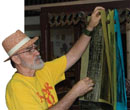

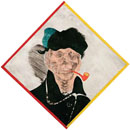
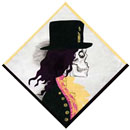

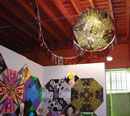
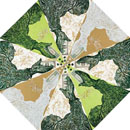
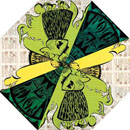

Previous publication TO SEE THE SPIRIT
Next publication Cildo Meireles. Against hegemonic ideas in art
Related Publications

How Harumi Yamaguchi invented the modern woman in Japan
March 16, 2022












